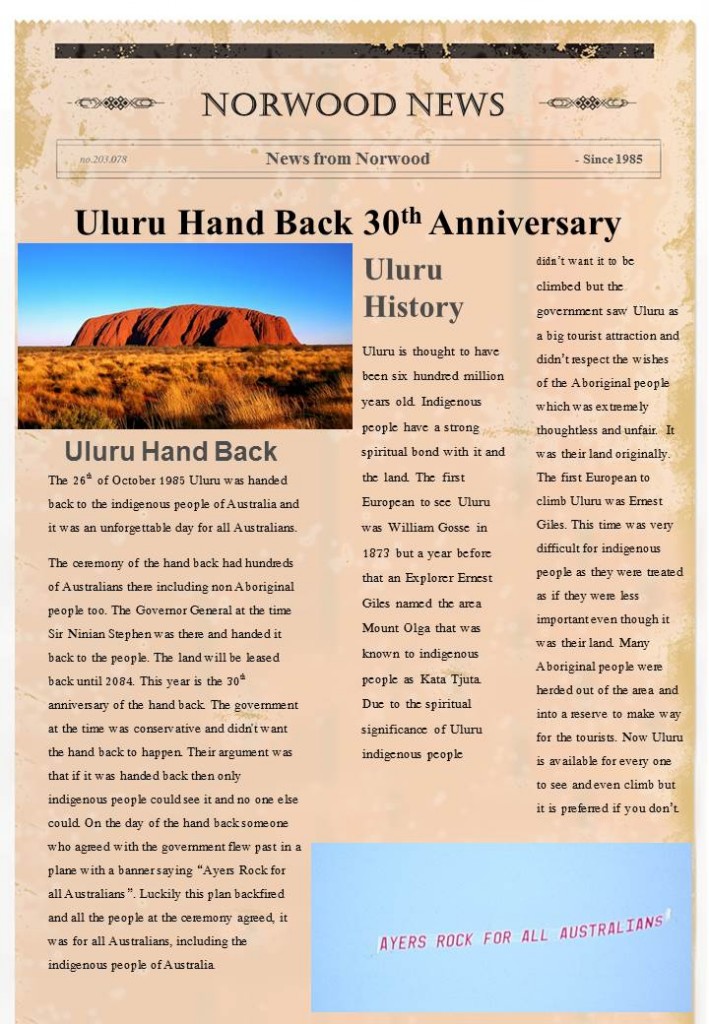What do you think of these presentations? It would be great for the students to get some feedback. Please feel free to click on the title of the post and leave a comment in the box provided at the very end of this post. 🙂
Uluru Hand back blog post. By Ben
This year it is the 30th anniversary of the hand back of Uluru and Kata Tjuta. Today on my blog, we will be looking at the hand back of Uluru and Kata Tjuta to the Aboriginal people and the journey towards it. I will look at some FAQs and try to help answer them.
Q. When was Uluru first discovered?
A. Aboriginal people have been living around Uluru for thousands of years. The beginning of the European oppression was in 1873, when Ernest Giles first sighted the monument. The name was vandalised to Ayers rock after SA governor Sir Henry Ayers.
Q. When was Uluru handed back?
A. In 1985, Uluru and Kata Tjuta were rightfully handed back to the Aboriginal group of that area. They were then leased to the director of National parks for 99 years.
Q. But when was the land ‘taken away’?>
A. In the early 1900s, an Aboriginal reserve was created around Uluru and local people can remember being herded into this area. Then, in 1958, the Northern Territory government realised the tourism value of this land. They exploited an Aboriginal landmark by robbing Kata Tjuta and Uluru from the reserve and disrespecting Aboriginal peoples’ rights and beliefs.
Q. Less than 20 years seems like a fast turnaround, how was Uluru handed back so quickly after it was removed from the reserve?
A. Well, when Uluru was finally handed back, the obnoxious Northern Territory government didn’t agree with it and it was a federal over-ruling that lead to the hand back that the Aboriginal people deserved. They even hired an aircraft to fly over, to press their self-righteous view on all Australians.
Looking back, it is obvious that this was a vital moment in Australia’s history and it was around this time, that people began to change their views on Aboriginal people’s culture. I have added a link to a music video of the song ‘Beds are burning’ by Midnight Oil. This is advocating about handing the land back.
https://www.youtube.com/watch?v=ejorQVy3m8E
References
https://bobinnes.wordpress.com/tag/ayers-rock-handover/
http://mpegmedia.abc.net.au/rn/podcast/2008/07/aye_20080705_1800.mp3
http://www.abc.net.au/radionational/programs/awaye/our-spirit-becomes-one/3670358

Uluru handback report By Shriya
Check out this website made by Sophie, Ruby and Aeriel:
http://uluruhandback.weebly.com/
Here is an Emaze presentation by Louisa and Naurah:

A Podcast from Francesca:







